Research indicates that up to 28% of crashes are due to the road environment. The first and most important objective of road safety audit is to minimize the risk of crashes, and to minimize the severity of any crashes that may occur on a new road project. Road safety audit is suggested to be undertaken for all CAREC road projects. This manual provides full information for those who undertake the audits (practitioners) as well as for those who manage the audit process (policy makers).
About the CAREC Road Safety Engineering Manuals
The series of road safety engineering manuals of the CAREC Program came from the endorsement of the CAREC Road Safety Strategy 2017-2030 by member countries. The strategy supports and encourages CAREC authorities to plan, design, construct, and maintain safe roads.
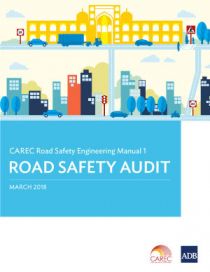
CAREC Road Safety Engineering Manual 3: Roadside Hazard Management
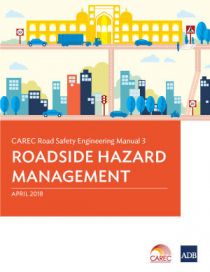
Single vehicle “run-off road” crashes are a significant problem on CAREC roads. They are particularly severe and can occur anywhere and at any time. Identifying, investigating, and treating roadside hazards are significant road safety challenges along CAREC highways. It uses a roadside hazard management strategy and the clear zone concept to explain how CAREC road authorities can (i) identify roadside hazards, (ii) investigate how best to treat those roadside hazards, and (iii) implement effective safety improvements. The manual explains the three groups of safety barriers and offers options for safer roadside furniture.
About the CAREC Road Safety Engineering Manuals
The series of road safety engineering manuals of the CAREC Program came from the endorsement of the 2017-2030 CAREC Road Safety Strategy 2017-2030 by member countries. The strategy supports and encourages CAREC authorities to plan, design, construct, and maintain safe roads.
International Lessons for Road Safety in the People's Republic of China
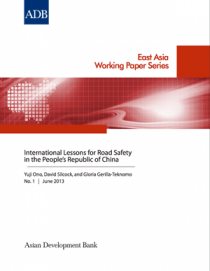
Road traffic collisions are a serious constraint to development and a burden to many low- and middle-income countries. The World Health Organization estimates that each year around 1.2 million deaths and between 20 and 50 million injuries occur on the world's roads. These road traffic collisions are a serious constraint to development and a burden to many low and middle income countries.
Acknowledging the global importance of road safety as a development issue, this staff working paper considers approaches and good practices for road safety which have been adopted in the best performing countries during recent decades, drawing in part on the findings of a technical assistance project on Improving Road Safety through the Application of Intelligent Transport Systems in the People's Republic of China (PRC), it suggests how these can be useful for reducing road traffic deaths and injuries in the PRC.
Conclusions
Road traffic collisions are a major global health problem, leading to similar numbers of worldwide deaths as malaria or tuberculosis. The great majority of these deaths occur in low and medium income countries, where the problem is often getting worse due to increasing motorization. In contrast, many high income countries, despite their high levels of vehicle ownership, demonstrate steady improvement.
This paper has identified lessons from high income countries that have been successful in road safety that are relevant for the PRC and other low and medium income countries to draw upon and benchmark, in their efforts to reduce road traffic deaths and injuries. These include the following:
- Because road safety is a multi-sectoral, multi-disciplinary issue, coordination of actions by all relevant agencies is critical. The most successful countries have a strong multi-stakeholder coordination mechanism, with a lead agency to oversee and ensure coordinated actions;
- An action plan, with quantified targets against which progress can be assessed and outcomes evaluated, helps to give focus and momentum to the implementation of road safety policies. Evaluation of the impact of projects and policies is important to inform future actions and for updating of the action plan; and
- Actions are needed at national and local government levels. Professional staff, with responsibilities for road safety, need to be trained and recruited for all levels of government.
Safely Connected: A Regional Road Safety Strategy for CAREC Countries, 2017-2030
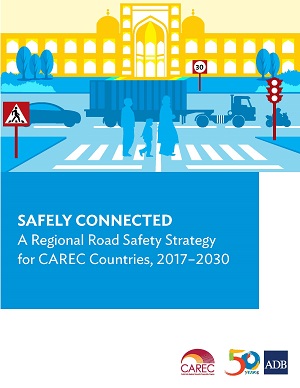
Road accidents are the sixth leading cause of death in Central Asia., with a road traffic death rate of 10 to 25 per 100,000. A framework is needed for Central Asia Regional Economic Cooperation (CAREC) member countries to effectively implement CAREC’s commitment to road safety. CAREC’s strategy envisions making its road corridors safe, efficient, and attractive to motorists. The target is to halve the number of CAREC road corridor fatalities by 2030—translating to 23,000 lives saved and 250,000 serious injuries prevented annually.
The strategy builds upon existing strengths within the region, addresses gaps, utilizes good practice, and mitigates risks. This publication embodies the CAREC countries’ commitment to make road safety a priority.
Investing in star ratings pays off in road safety
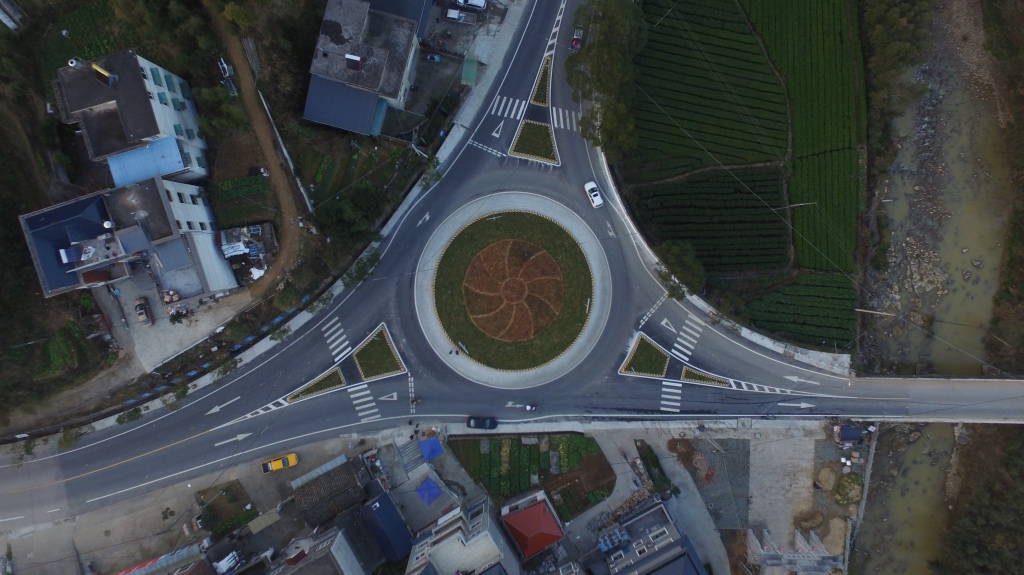
Contact Person
Pagination
- Previous page
- Page 2